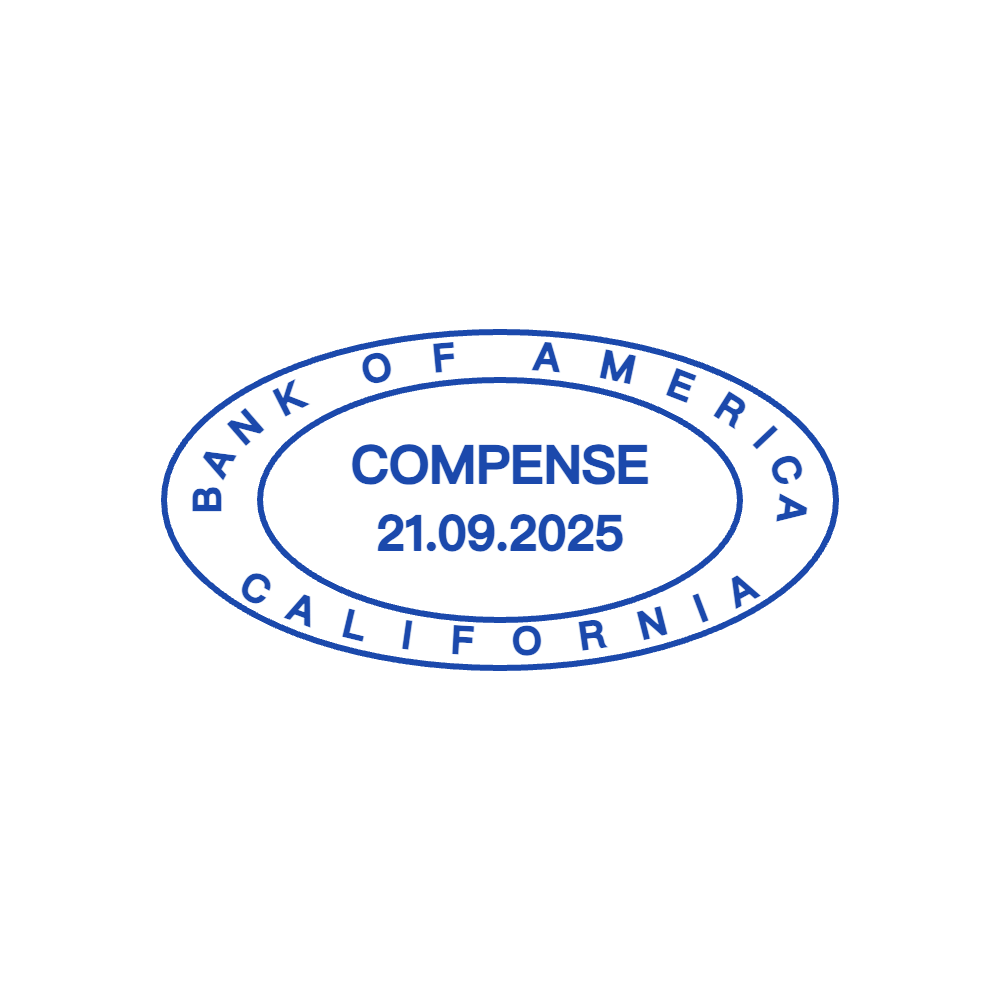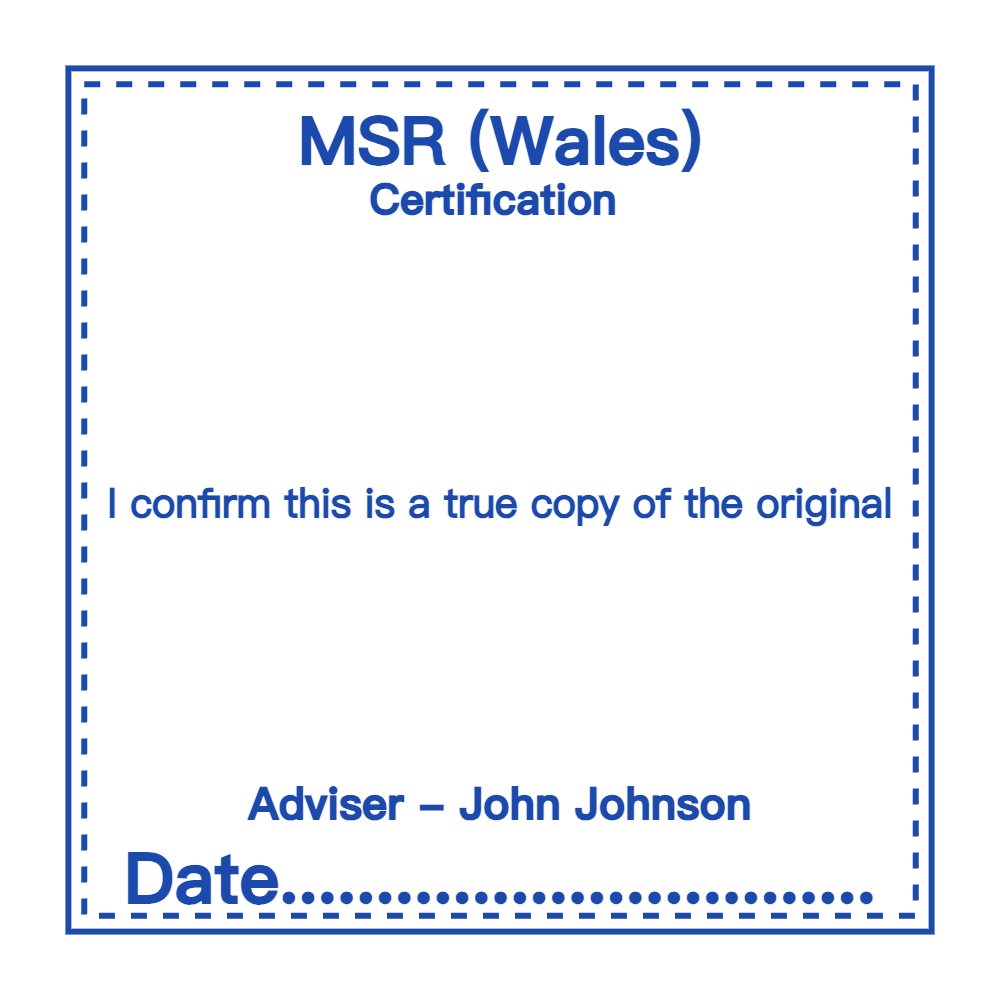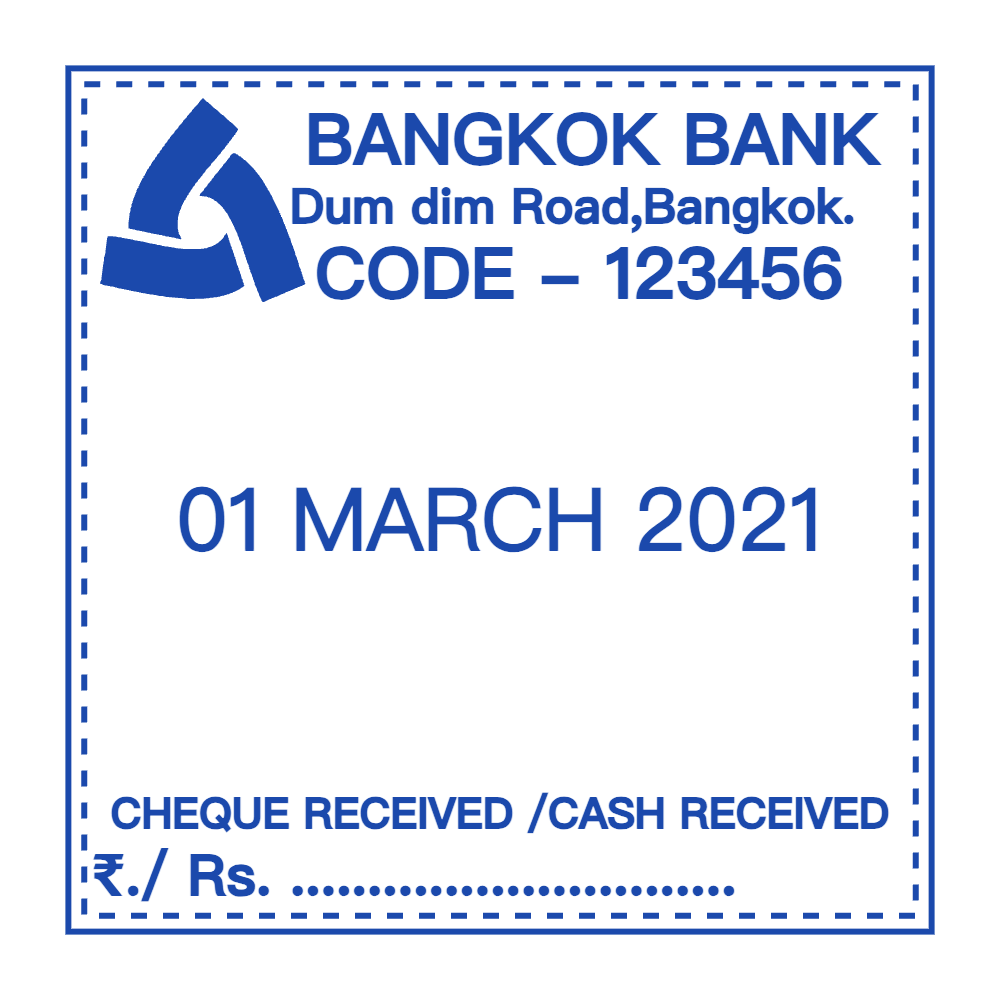Bank Stamps Templates
Free editable bank stamps templates for online editing
Found 4 bank stamps Templates




A Simple Guide to Bank Stamps: Uses, Types, and How to Choose One
If you’ve ever visited a bank or handled business banking tasks, you’ve probably seen a bank stamp in action. From endorsing checks to marking important documents, these stamps are a staple in financial settings—they keep processes fast, accurate, and compliant. At Stampdy, our bank stamp templates are made to fit the unique needs of banks, credit unions, and even small businesses that handle frequent banking tasks. This guide breaks down what bank stamps are, how they’re used, the different types available, and how to pick the right one for your needs.
What Is a Bank Stamp, and Why Does It Matter?
A bank stamp is a specialized tool used to imprint standardized information on financial documents like checks, deposit slips, loan papers, or account statements. Unlike regular stamps, bank stamps are designed to meet strict banking rules—they need to be clear, consistent, and hard to alter (to prevent fraud).
Think about it: When a bank processes hundreds of checks a day, handwriting “For Deposit Only” or an account number on each one would be slow and error-prone. A bank stamp solves that: one quick press adds the exact info needed, every time. For businesses, too—if you deposit customer checks daily, a stamp with your business name and “For Deposit Only” keeps your funds secure and speeds up the deposit process.
The biggest reason bank stamps matter? Compliance and security. Banks have to follow strict regulations (like anti-money laundering laws) to track transactions. A clear, standardized stamp helps document who handled a check, when it was processed, and where the funds are going—reducing the risk of mix-ups or fraud.
Common Types of Bank Stamps (and Who Needs Them)
Not all bank stamps do the same job. The type you need depends on what tasks you’re handling—whether you’re a bank employee, a small business owner, or someone who manages personal finances regularly. Here are the most useful ones:
1. “For Deposit Only” Stamps
This is the most common bank stamp, and for good reason. It’s used to mark checks so they can only be deposited into a specific account—no one can cash them. Most “For Deposit Only” stamps include:
- The phrase “For Deposit Only” (in bold, easy-to-read text)
- A line for an account number (either pre-printed or blank to fill in)
- Sometimes the bank’s name or branch location.
Who needs it:
- Small business owners who deposit customer checks (prevents someone from stealing a check and cashing it).
- Individuals who deposit checks for a family member or organization (e.g., a church treasurer depositing donations).
- Bank tellers who process large volumes of checks daily.
2. Account Number Stamps
These stamps imprint a specific bank account number onto documents like deposit slips, withdrawal forms, or loan applications. They’re a huge time-saver for anyone who fills out the same account number repeatedly.
Who needs it:
- Businesses that make frequent deposits or withdrawals (avoids typing or writing the account number wrong).
- Nonprofits or clubs that handle group funds (ensures all transactions go to the right account).
- Bank staff who manage account paperwork for regular customers.
3. Date & Initial Stamps
Bank documents often need a record of when they were processed and who handled them. Date & initial stamps have two parts: a section that imprints the current date (some are adjustable, others auto-update) and a small blank area for an employee’s initials.
Who needs it:
- Bank tellers and loan officers (to track when they processed a check or approved a document).
- Business finance teams (to document when customer checks were received and deposited).
4. “Paid” or “Processed” Stamps
These stamps mark documents like loan installments, bill payments, or check copies as “Paid” or “Processed” once the transaction is complete. They help keep records organized and prevent duplicate payments.
Who needs it:
- Bank loan departments (to mark loan payments as received).
- Business accounting teams (to track which customer invoices have been paid via check).
How to Choose the Right Bank Stamp
Picking a bank stamp isn’t complicated—just focus on three things: what you’ll use it for, how often you’ll use it, and whether it meets banking rules. Here’s how to decide:
1. Start with Your Main Task
Ask yourself: What will I use the stamp for most?
- If you’re depositing checks: Go with a “For Deposit Only” stamp (add your account number if you want it pre-printed).
- If you’re processing bank paperwork: A Date & Initial stamp or “Processed” stamp is best.
- If you’re a business owner: A combo stamp (e.g., “For Deposit Only” + your business name + account number line) will cover most needs.
2. Choose Durability for Frequent Use
Bank stamps get a lot of use—you don’t want one that fades or breaks after a few weeks. Look for:
- Self-inking stamps: These have a built-in ink pad that recharges after each use—perfect for bank tellers or businesses that process 50+ documents a day. They last for 5,000+ impressions before needing a refill.
- Polymer material: Polymer stamps make sharper impressions than rubber, which is important for account numbers (blurry numbers can cause deposit delays).
3. Make Sure It’s Compliant
Banks have rules about what info needs to be on a stamp (e.g., account numbers must be clear, “For Deposit Only” text must be legible). When customizing your stamp:
- Use a bold, sans-serif font (like Arial) for text—avoid fancy scripts that are hard to read.
- Keep the design simple: Don’t add extra graphics or text that could clutter the stamp (banks prefer clean, straightforward imprints).
- If you’re unsure: Ask your bank if they have any specific requirements—most will be happy to share what works best.
Tips for Using Bank Stamps Correctly
Even the best bank stamp won’t help if you use it wrong. Here are a few simple tips to keep things smooth:
- Stamp in the right spot: For checks, “For Deposit Only” stamps should go on the back, near the top (this is where banks expect it—stamping elsewhere might cause delays). For deposit slips, stamp near the account number section.
- Press lightly but evenly: Too much pressure can smudge the ink; too little, and the text will be faint. A gentle, even press is all you need.
- Keep it clean: If ink builds up on the stamp (common with self-inking models), wipe it with a damp cloth every few weeks. This keeps impressions crisp.
- Store it safely: Bank stamps have sensitive info (like account numbers), so keep them in a locked drawer or cabinet when not in use. Don’t leave them out on a desk where anyone can pick them up.
Common Questions About Bank Stamps
Q: Can I use a regular stamp instead of a bank-specific one?
A: It’s not a good idea. Regular stamps might not be durable enough for frequent use, and their ink could fade or smudge—leading to rejected deposits or lost documents. Bank stamps are made to stand up to banking demands, so they’re worth the investment.
Q: Do I need a custom bank stamp, or can I buy a generic one?
A: It depends. Generic “For Deposit Only” stamps work if you just need the basic phrase. But if you want to add an account number, business name, or bank info, a custom stamp is better. Custom stamps are also more secure—pre-printed account numbers mean no one can fill in the wrong number by hand.
Q: How long does a bank stamp last?
A: With proper care, a good bank stamp can last 2–3 years. Self-inking stamps will need ink refills every 5,000–10,000 impressions, but refills are cheap and easy to do (most take 2–3 drops of ink).
Q: Can I use a bank stamp for personal checks?
A: Absolutely! If you deposit personal checks often (e.g., from a side gig or gifts), a “For Deposit Only” stamp with your account number saves time and keeps your checks secure.
Why Choose Stampdy for Your Bank Stamp?
When you’re picking a bank stamp, you need something reliable—something that won’t let you down when you’re processing important financial documents. Here’s why Stampdy’s bank stamp templates work:
- Built for banking: Our stamps use durable polymer and fade-resistant ink, so they meet bank standards for clarity and security.
- Easy to customize: Add your account number, business name, or bank info in minutes—our design tool lets you preview how it will look before you buy.
- Fast delivery: Most custom bank stamps ship within 1–2 business days, so you won’t have to wait weeks to start using it.
If you’re ready to make banking tasks faster and more secure, browse our bank stamp templates today. Whether you need a simple “For Deposit Only” stamp or a custom account number stamp, we’ve got you covered.